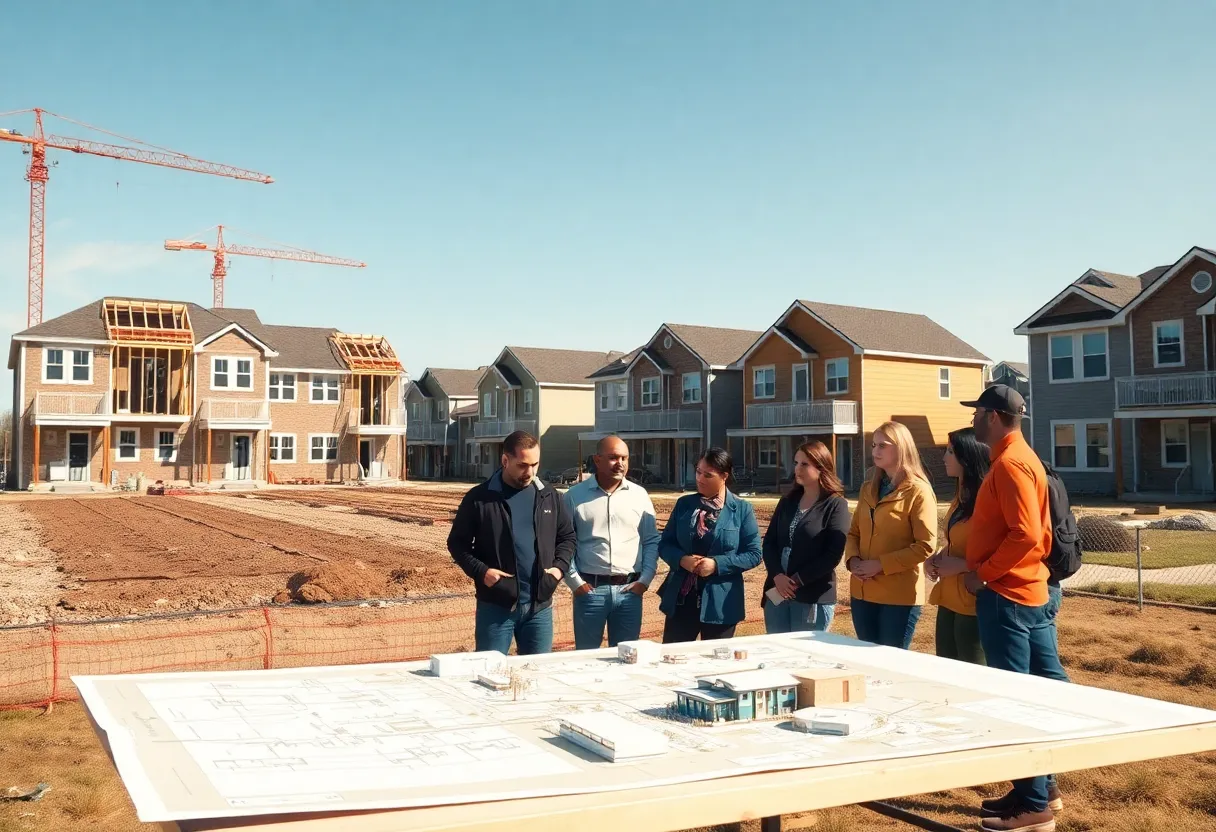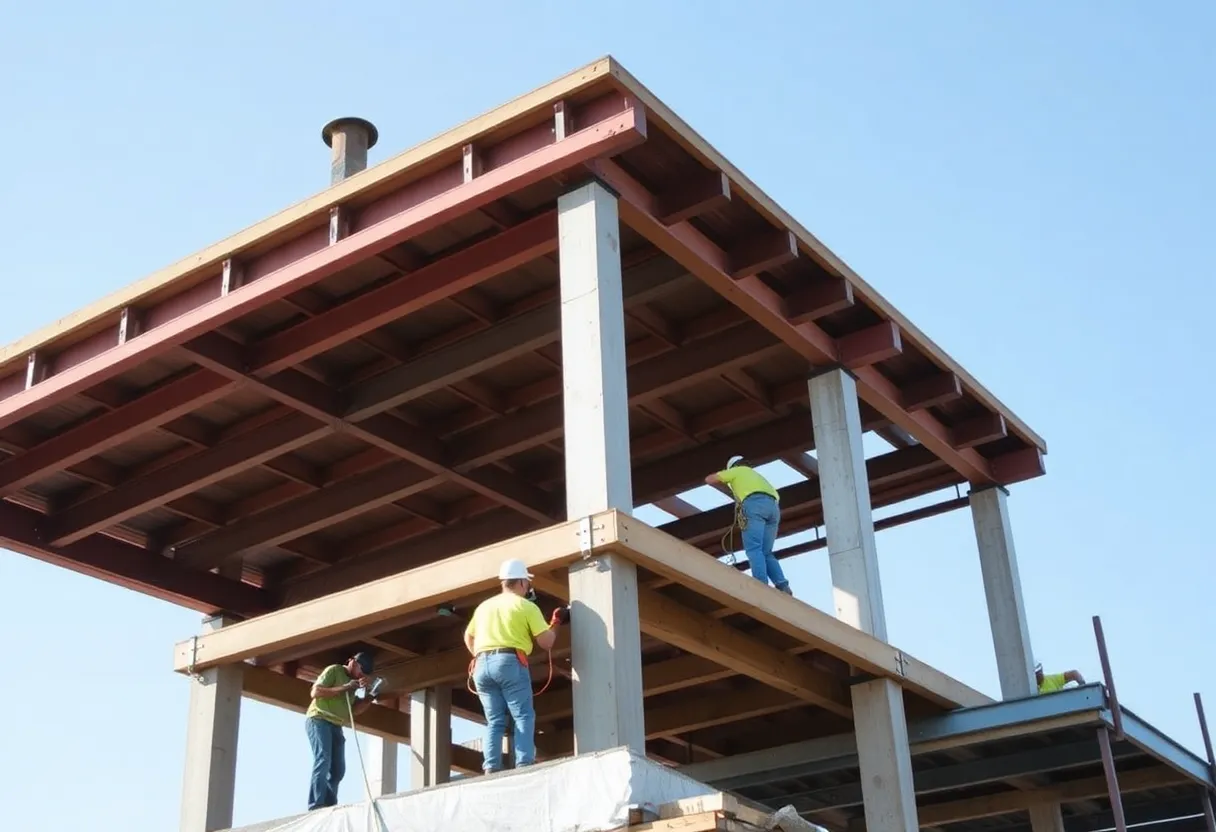Cabarrus County, North Carolina, August 28, 2025
News Summary
Cabarrus County seeded a $2 million Revolving Construction Loan Gap Fund to help nonprofits and social ventures finish affordable and workforce housing projects. Managed by a local housing nonprofit, the fund offers short-term, low-interest loans (1%–3%) to cover final construction gaps so projects can proceed. A Permanent Housing Committee of nonprofit leaders, developers, community members and lenders will review requests with technical support from a local bank. The fund is designed to revolve as loans are repaid and to grow with grants and donations, addressing a significant local housing shortfall amid rapid population and rent growth.
Cabarrus County launches $2 million Revolving Construction Loan Gap Fund to help finish affordable and workforce housing
Cabarrus County has put $2 million into a new fund called the Revolving Construction Loan Gap Fund to help nonprofits and community groups finish affordable and workforce housing projects. The fund, run by a local housing nonprofit, will make short-term, low-interest loans meant to cover the final dollars needed to move a project from planning into construction.
What the fund offers and how it works
The loans are short-term and carry interest rates between 1% and 3%, far below typical construction gap rates that usually run between 5% and 8%. The fund is set up as a revolving loan, so loan repayments are intended to replenish the pot and allow new loans over time. The seed money came from the county, and leaders expect the fund to grow through repayments, government grants, private dollars and donations.
The fund is not intended to cover entire project costs. Instead, it aims to provide the last few dollars that a project needs to begin or complete construction, allowing organizations to proceed at a flat, predictable interest rate.
Who decides and how to apply
Nonprofits and social ventures can apply for loans through the managing nonprofit. A key feature of the program is that loan approval won’t come only from a bank. Instead, a Permanent Housing Committee made up of nonprofit representatives, housing developers, community members and lenders will review and decide loan requests. A local bank will supply technical support to the committee. This community-based review is meant to give smaller organizations a better chance to secure gap funding when traditional lenders may be reluctant.
Why local leaders say the fund is needed
Rising construction costs and a growing shortage of affordable housing are cited as the main reasons the fund is needed. The county and city are both seeing fast population growth, which boosts demand for homes and pushes prices and rents higher. Local housing leaders point to construction and land cost pressure as a major barrier to creating new affordable homes.
Local growth and housing needs
The county is home to about 245,000 people, with nearly half of those living in the county seat, which counts more than 112,300 residents. That city grew almost 7% between 2020 and last year and has expanded roughly 33% over the last decade. A regional analysis projects the county will be among the top 10 in the state for several growth measures between 2024 and 2029.
The same analysis estimates a housing supply gap of more than 15,300 homes across for-sale and rental markets. For households at or below 80% of Area Median Income (AMI)—a level generally considered eligible for affordable housing—the gap includes about 1,267 homes for sale and 2,691 rental units. For a family of four, 80% of AMI is below $89,750. The county’s median household income is about $86,084.
Housing cost pressure is clear: roughly 27% of the county’s roughly 20,341 homes are considered cost-burdened, meaning the household pays more than 30% of income toward housing. Rent averages in the city are over $1,500, and leaders note the county has some of the fastest year-over-year rental increases in the state.
Existing local housing projects tied to the fund’s goals
The nonprofit running the fund has opened a 26-unit townhome project that offers homes for sale and lease-to-own options, and it is converting a historic church into a mixed-income development with community and artist incubator space. The group is also working on a tiny home village downtown. Other local organizations are pursuing larger projects aimed at transitional housing, workforce housing and community services.
One example is a planned campus on about 10 acres inside a redeveloped old textile mill site. The multi-phase project aims to build up to 96 apartments and provide services such as a program center, daycare, retail and job opportunities. The campus is designed to offer transitional housing with training that helps residents move into stable, affordable housing within a few years. That project’s estimated cost is roughly $13.5 million and is expected to take several years to complete.
Public funding and budget context
The city has earlier set aside a small share of property tax revenue for affordable housing; its approved budget for the coming fiscal year includes about $1.8 million dedicated to affordable housing. The new gap fund adds another county-level tool intended to accelerate projects that might otherwise stall for lack of short-term construction dollars.
Bottom line
The new Revolving Construction Loan Gap Fund aims to unblock stalled projects by offering short-term, low-cost loans and community-based approvals. The fund targets the moment when a project needs a final infusion to begin construction, and it aims to grow over time so more local housing efforts can move forward in a county facing rapid population growth and a significant affordable housing shortfall.
FAQ
Q: What is the Revolving Construction Loan Gap Fund?
A: It is a short-term loan program seeded with $2 million from the county to help nonprofits cover the final funding needed to start or finish affordable and workforce housing projects.
Q: Who runs the fund and who can apply?
A: A local housing nonprofit manages the fund. Nonprofits and social ventures working on eligible housing projects can apply through that nonprofit.
Q: What are the loan terms?
A: Loans are short-term and offered at low interest rates between 1% and 3%. The fund is designed to be revolving, so repayments are used to make new loans.
Q: How are loan decisions made?
A: A Permanent Housing Committee — made up of nonprofit leaders, developers, community members and lenders — reviews applications and decides on approvals, with technical support from a local bank.
Q: Will the fund cover entire project costs?
A: No. The fund is meant to provide the last gap in funding so projects can proceed into or through construction.
Q: How does this fund address local housing needs?
A: By targeting final construction gaps and offering lower-cost short-term loans, the fund aims to speed projects that increase affordable and workforce housing supply in a county facing strong population growth and a notable housing shortfall.
Key features at a glance
| Feature | Details |
|---|---|
| Seed funding | $2 million from the county |
| Purpose | Cover the final funding gap so affordable and workforce housing projects can begin or finish construction |
| Loan type | Short-term, revolving loans |
| Interest rate | 1%–3% |
| Approval body | Permanent Housing Committee made up of nonprofits, developers, community members and lenders |
| Application route | Apply through the managing housing nonprofit |
| Growth plan | Replenish through repayments and expand with grants, private dollars and donations |
| Local need | County faces a housing gap of more than 15,300 homes; significant growth and rent pressures |
Deeper Dive: News & Info About This Topic
Additional Resources
- Charlotte Observer: Cabarrus County launches $2M Revolving Construction Loan Gap Fund
- Wikipedia: Cabarrus County, North Carolina
- WSOC-TV: Cabarrus County launches $2M fund to boost affordable housing
- Google Search: Revolving Construction Loan Gap Fund Cabarrus
- Independent Tribune: Local coverage of Cabarrus affordable housing efforts
- Google Scholar: affordable housing Cabarrus County North Carolina
- The Charlotte Post: Charlotte region growth strains affordable housing stock
- Encyclopedia Britannica: Affordable housing
- WCNC: Cabarrus County organization seeking solutions to housing affordability
- Google News: Cabarrus County affordable housing
Author: Construction FL News
The FLORIDA STAFF WRITER represents the experienced team at constructionflnews.com, your go-to source for actionable local news and information in Florida and beyond. Specializing in "news you can use," we cover essential topics like product reviews for personal and business needs, local business directories, politics, real estate trends, neighborhood insights, and state news affecting the area—with deep expertise drawn from years of dedicated reporting and strong community input, including local press releases and business updates. We deliver top reporting on high-value events such as the Florida Build Expo, major infrastructure projects, and advancements in construction technology showcases. Our coverage extends to key organizations like the Associated Builders and Contractors of Florida and the Florida Home Builders Association, plus leading businesses in construction and legal services that power the local economy such as CMiC Global and Shutts & Bowen LLP. As part of the broader network, including constructioncanews.com, constructionnynews.com, and constructiontxnews.com, we provide comprehensive, credible insights into the dynamic construction landscape across multiple states.





